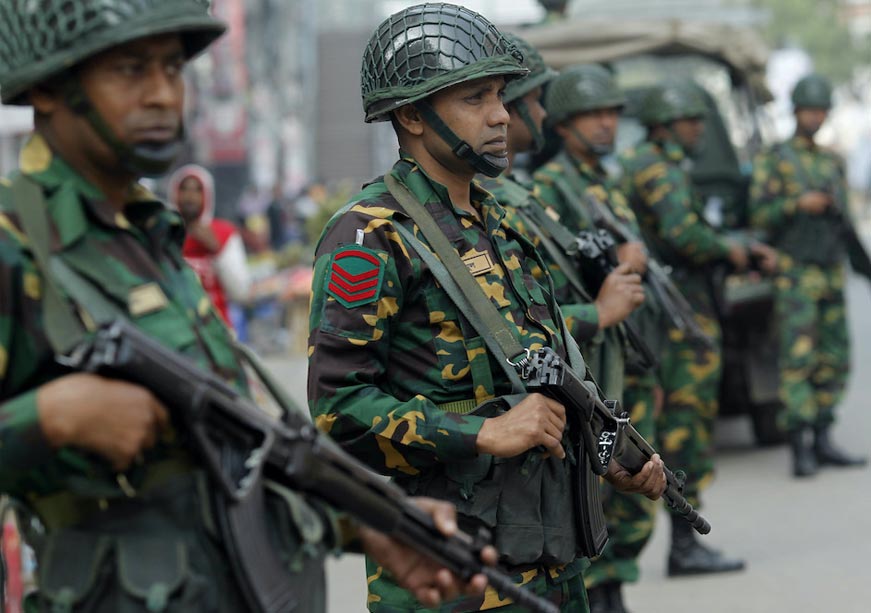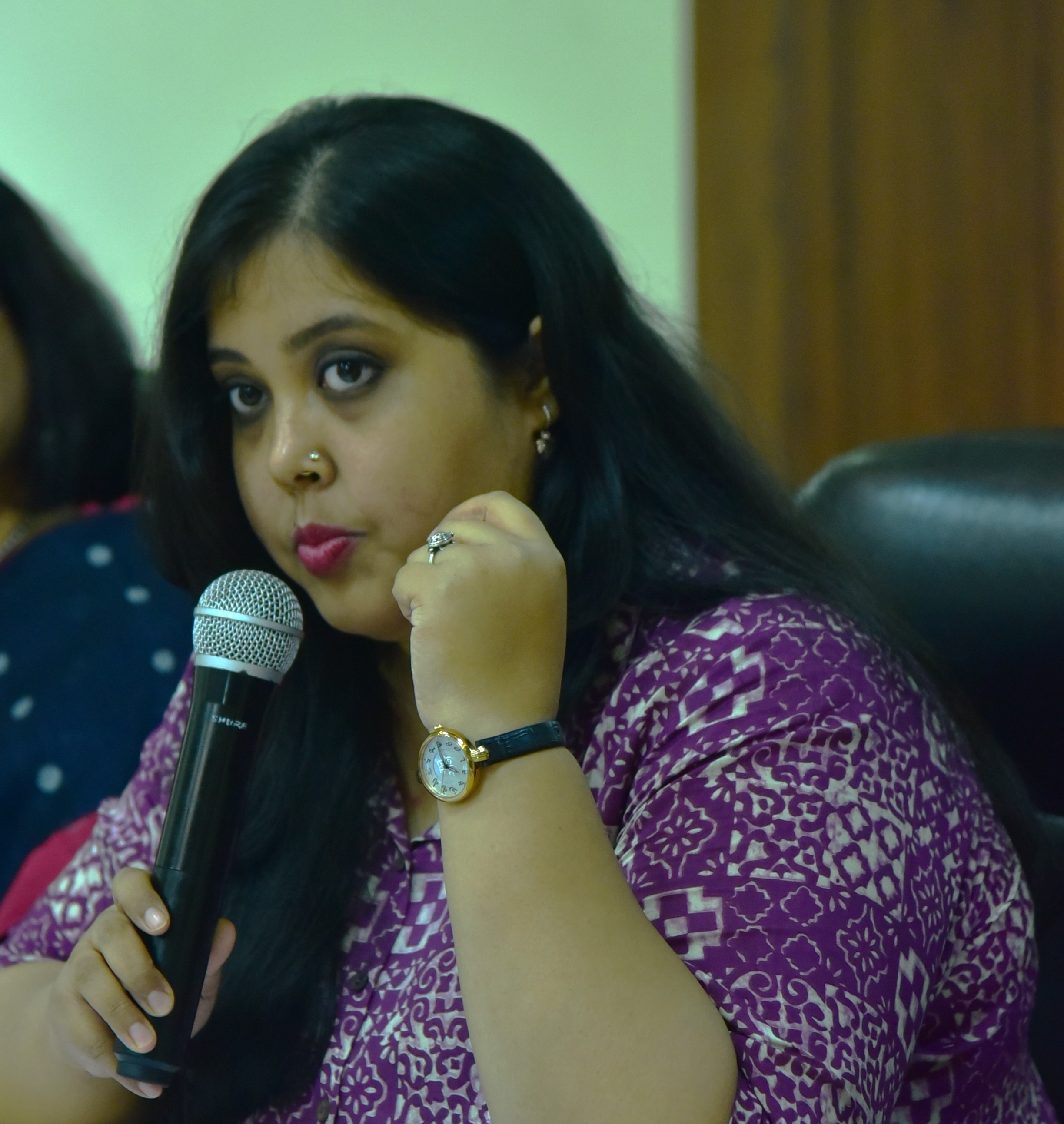-
CENTRES
Progammes & Centres
Location
Dhaka is reshaping its defence playbook—diversifying partners, cutting reliance on China, and blending imports with self-reliance.

A contingent of 120 military personnel from the United States (US) arrived in Chattogram, Bangladesh, on 10 September 2025. While international media speculates an upcoming joint exercise, it is evidence of Dhaka’s warming ties with Washington, D.C., on the defence front, a divergence from the cooler ties shared during the previous Hasina government. In August 2025, the US and Bangladesh concluded a bilateral military exercise, Tiger Shark, which enhanced regional security cooperation, interoperability, and built mutual capacity between the armed forces of both nations. Since its regime change in 2024, Bangladesh has been charting new pathways in its foreign policy to break free of the former 15-year-old Awami League mould and craft a new identity. Diversifying defence partnerships has thus become a priority for the Bangladesh Chief Adviser Muhammad Yunus.
Dhaka is driven by its military modernisation plan, Forces Goal 2030, adopted in 2009 and revived in 2017, to transform the Bangladesh Armed Forces into a “sophisticated 21st century militia”. Although adopted during the former Awami League administration, it is relevant not only for development but also to protect the country against looming security threats. Indeed, in recent years, multiple security concerns have erupted, making it necessary for Dhaka to strengthen its defence. Foremost among them are the skirmishes along its border with Myanmar, where the rebel groups in the Rakhine and Chin states are gaining strongholds over the military junta. The Arakan Army, particularly, has committed violence against Bangladeshis near the Naf River. The risk of the conflict spilling across the border is high, as there are sympathisers of the rebel forces. This has sparked increased incursions of Rohingyas into the country, along with Myanmar security personnel seeking to avoid capture.
Since its regime change in 2024, Bangladesh has been charting new pathways in its foreign policy to break free of the former 15-year-old Awami League mould and craft a new identity. Diversifying defence partnerships has thus become a priority for the Bangladesh Chief Adviser Muhammad Yunus.
There is also a risk of the conflict spilling over from the Indian state of Manipur, bordering Bangladesh, where ethnic violence continues among the Meitei and Kuki Zo communities. If the conflict reverberates within Zo/Chin communities of the Chattogram Hill Tract region, it can trigger the Kuki-Chin National Army’s claims for a separate territorial state. The group reportedly has an active presence in India, Myanmar, China, and Bangladesh, and has been responsible for violence in Manipur. Ethnic conflicts aside, Bangladesh’s relationship with India has also been strained following its 2024 regime change. The Indian armed forces have also been instructed to be cautious of the situation and prevent unwanted developments. The prevalence of external and internal security concerns has necessitated Bangladesh to bolster its defence.
However, to do so, Bangladesh has chosen to diversify its defence partnerships, particularly to reduce an overt dependence on China for arms supply. During the Hasina years, China emerged as Bangladesh’s largest defence partner, supplying around 72 percent of Bangladesh’s military hardware since the signing of the 2002 Bangladesh-China Defence Cooperation agreement. These include sophisticated corvettes, Short Range Surface Air Missiles, VT5 light tanks, Ming-class submarines, light arms, interceptor jets, radars, and frigates. Beijing also built a six-slot submarine base named BNS Sheikh Hasina in 2023. The majority of military equipment in Bangladesh’s artillery is manufactured in China, including the K8-W Jet trainer, the Type 59D battle tank, and the attack submarine, ‘Nabajatra’.
Bangladesh has chosen to diversify its defence partnerships, particularly to reduce an overt dependence on China for arms supply.
However, in recent years, there has been a growing dissatisfaction with the quality of arms supplied from Beijing. As late as 2018, a Chinese-made BAF K8-W trainer had crashed into Oxbow Lake, Jessore, resulting in the death of two pilots. In 2022, Bangladesh rejected the China North Industries Corporation’s supply of tank ammunition, as these had allegedly not been tested before supply. Recently, in June 2025, a Chinese-made F-7BGI crashed into Dhaka’s Milestone school, killing at least 20 people and injuring 200. Bangladesh media have reported several concerns about transport vehicles, including the engine, communication system, and infrared guidance device. Moreover, the Bangladesh Navy reported that the radars provided by China Shipbuilding and Offshore International were unsatisfactory. The poor after-sales support by the Chinese, which has affected the machinery’s functionality, has also eroded trust.
To reduce dependence on Beijing and execute a diplomacy of balance, former Prime Minister (PM) Sheikh Hasina had encouraged a defence partnership with New Delhi. India's military support to Bangladesh dates back to 1972, when Bangabandhu Sheikh Mujibur Rahman signed the Treaty of Friendship and Peace (essentially a defence pact) with the then-Indian PM Indira Gandhi. With the assassination of Mujib in 1975 and the priority of succeeding governments to disengage Bangladesh from India, the Treaty collapsed in 1997. The return of the Awami League to power in 2009 renewed defence cooperation, with former PM Hasina committed to countering insurgent groups troubling India’s Northeast from their shelters in Bangladesh. Counter-terrorism formed the bedrock of modern India-Bangladesh defence cooperation, culminating in Exercise ‘Sampriti’. New Delhi proposed a comprehensive defence partnership agreement in 2017, but the lingering mistrust restricted it to the signing of five memoranda of understanding (MoUs) on defence cooperation, instead. It was only in 2024 that the defence partnership regained momentum due to Dhaka’s increasing dissatisfaction with Chinese weaponry, concerns over instabilities in the neighbourhood, and the realisation of its military modernisation plan. Accordingly, both countries highlighted ‘defence industrial cooperation’ in their ‘Shared Vision for Future’.
To reduce dependence on Beijing and execute a diplomacy of balance, former Prime Minister (PM) Sheikh Hasina had encouraged a defence partnership with New Delhi.
However, this partnership was short-lived as ties deteriorated rapidly after the regime change. Although the cooperative naval exercise ‘Bongosagar’ was still held in March 2025, there are signs of waning confidence. Dhaka recently cancelled a US$21 million defence deal given to an Indian shipyard. In addition, during a recent meeting between the border forces of the two nations, Bangladesh has attempted to renegotiate or revoke “unfair border agreements”. As Dhaka recreates its identity, it is ‘reaching out to everybody’, beyond traditional partnerships.
In June 2025, Yunus met Haluk Gorgun, Secretary of Türkiye’s Defence Industries, in Dhaka to discuss the expansion of defence cooperation between the two countries. Earlier this year, a Bangladeshi military delegation travelled to Ankara to discuss bilateral issues with the Turkish Minister of Foreign Affairs, Hakan Fidan. Two months later, representatives from the Bangladesh Investment Development Authority (BIDA) made a five-day visit to Türkiye to discuss co-production, technology transfer, and capacity-building agreements. They were allowed exclusive access to Makine ve Kimya Endustrisi, Türkiye’s state-owned defence manufacturer in Kirikkale, Central Anatolia. Reportedly, BIDA is planning to establish defence industrial complexes in Chattogram and Narayanganj in partnership with Turkish defence firms. Bangladesh has not only acquired 18 Boran 105 mm howitzer guns, the T-230, and the TRG-300 rocket systems—designed for high-speed and long-range destruction—but also the prospect of a defence cooperation. Besides Baghdad, the Yunus government is also keen on forging a defence partnership with Islamabad.
For the first time since the birth of Bangladesh, several defence exchanges have taken place with Pakistan. Both sides discussed regional security dynamics, the scope for joint military exercises, training programmes, and defence trade. A military delegation led by Pakistan’s Inter-Services Intelligence (ISI) Director General, Major General Shahid Amir Afsar, met their Bangladeshi counterparts in February 2025, marking the first high-level engagement between the ISI and Bangladeshi officials for military and intelligence cooperation. Dhaka’s warship BNS Samudra Joy also participated in a naval exercise, Aman-25, hosted by Islamabad. The two countries are reclaiming the past narrative of differences, as “brotherly countries” that must remain "resilient against external influences". There are also talks of Pakistani promises to train the Bangladesh Army and Dhaka’s interest in acquiring JF-17 Thunder fighter jets from them. Jointly developed by Beijing and Islamabad, these jets indicate a potential trilateral defence partnership among Pakistan, Bangladesh, and China, as Beijing is their largest defence partner.
For the first time since the birth of Bangladesh, several defence exchanges have taken place with Pakistan. Both sides discussed regional security dynamics, the scope for joint military exercises, training programmes, and defence trade.
Among other partnerships, Bangladesh is also seeking advanced defence purchases from Japan, which is intent on strengthening military export links with Dhaka as part of its Free and Open Indo-Pacific (FOIP) plan. The Japanese offer consists of the Mogami-class stealth frigate (US$100 million) and the Sōryū-class submarine, which has air-independent propulsion capabilities and can strengthen Bangladesh's naval and aerial capabilities. During Yunus’s visit to Japan in May 2025, Tokyo also committed to providing five patrol boats to the Bangladesh Navy. In June 2025, a Bangladeshi military delegation attended a high-profile international defence summit in London. This discussion involved integrated air and missile defence, interoperability, and the employment of modern, cost-effective technology to eliminate threats more effectively. A month later, at the Earthana Summit in Doha in July 2025, Yunus met Qatar’s Deputy PM and Minister of State for Defence Affairs, Sheikh Saoud bin Abdulrahman Al Thani. They discussed Qatar’s acceptance of 725 armed personnel from Bangladesh for the Qatari Armed Forces for efficient cooperation in defence.
Bangladesh's evolving defence partnerships highlight a broader strategic recalibration. Although Dhaka is keen to retain its ties with China, with Yunus discussing the sale of highly effective combat aircraft to the Bangladesh Air Force with Beijing in March 2025, it is also intent on diversifying its defence partnerships. This is a pragmatic shift, as quality questions arise over Chinese weaponry and ties with India are fraught with mutual apprehension. The effectiveness of the new partnerships in allaying security concerns will only be proven over time. Meanwhile, Dhaka is also emphasising self-reliance by building arms locally. The Bangladesh Machine Tools Factory produces light vehicles such as the Arunima utility trucks. The Bangladesh Ordinance Factory indigenously produces small arms, the BD-08 rifles, and Man-Portable Air-Defence Systems (MANPADs). The Khulna Shipyard has produced offshore patrol vessels and intends to build frigates and corvettes with assistance from Türkiye and China.
Dhaka’s diplomatic finesse will be tested as it strives to balance relations with its traditional partners, on whom it depends for substantial investments, and its emerging allies, who could potentially serve as alternatives to dilute its overdependence on any single power.
As Bangladesh seeks to carve out a new identity and forge fresh partnerships, the country is entering uncharted waters. Dhaka’s diplomatic finesse will be tested as it strives to balance relations with its traditional partners, on whom it depends for substantial investments, and its emerging allies, who could potentially serve as alternatives to dilute its overdependence on any single power. Between new imports and indigenous efforts, Bangladesh’s defence ambitions will ultimately be judged by how effectively they advance national interests. The outcome will shape not only the country’s future trajectory but also the strategic landscape of the Bay of Bengal region.
Sohini Bose is an Associate Fellow at the Observer Research Foundation
Srijita Mukhopadhyay was a Research Intern at the Observer Research Foundation
The views expressed above belong to the author(s). ORF research and analyses now available on Telegram! Click here to access our curated content — blogs, longforms and interviews.

Sohini Bose is an Associate Fellow at Observer Research Foundation (ORF), Kolkata with the Strategic Studies Programme. Her area of research is India’s eastern maritime ...
Read More +
Srijita Mukhopadhyay was a Research Intern at ORF, Kolkata. She is currently pursuing a Master’s degree in Geopolitics and International Relations from the Manipal Academy ...
Read More +